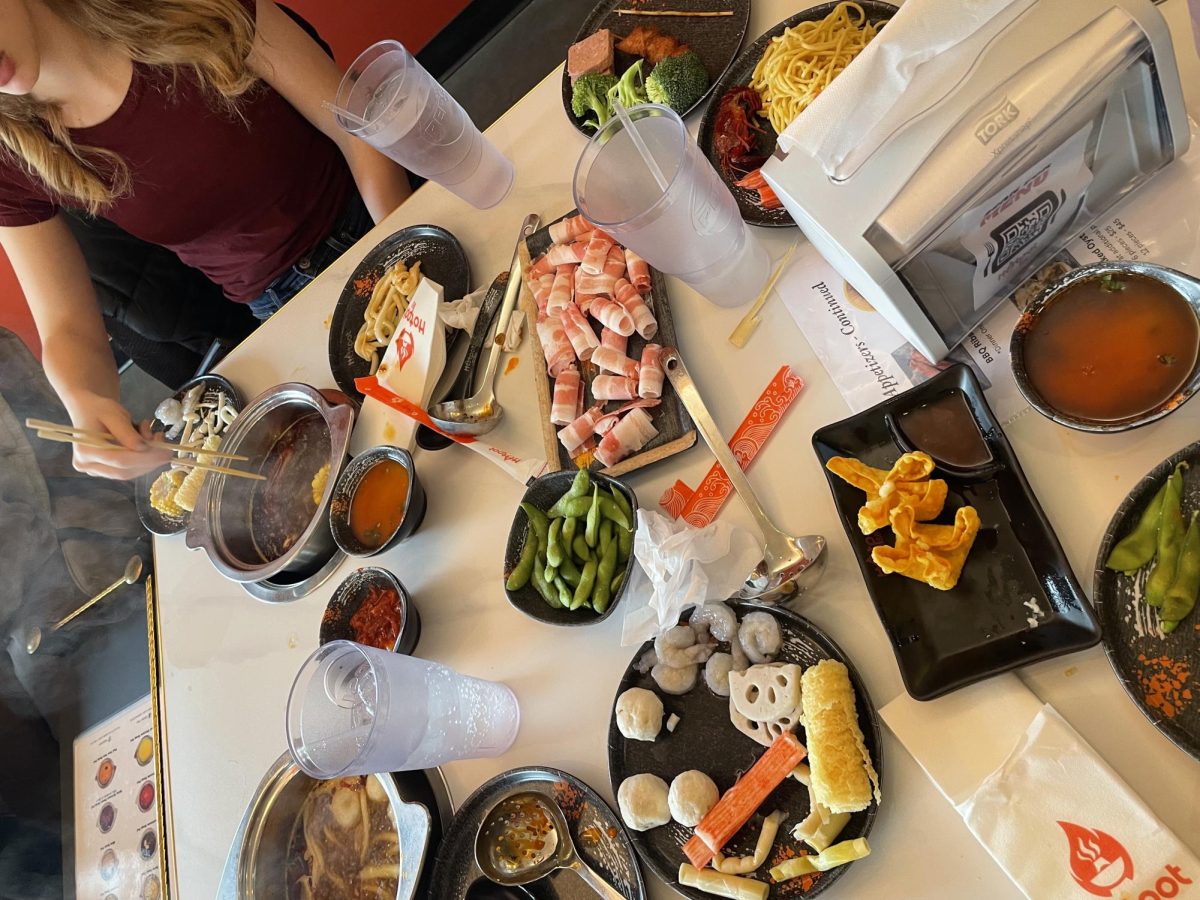For many children, waking up on Christmas morning and running downstairs to break open the wrapping on presents is the most exciting part of the holiday season. Everyone’s Christmas lists are filled with a number of items ranging from electronics to gardening tools. However, in the past decade or so, there’s been a change in the idea of gift giving, and the value and purpose of it has gotten slightly lost. There’s no surprise that the list of items asked for by middle school and high school students has changed over the years, but along with these natural changes, the innocence of gift giving has gone astray and rather there’s an over saturation of gifts marketed to school-age children and teens in all forms of media. In the midst of shifting gift trends and an overuse of social media, the very essence of gift giving should be brought back, valuing the importance of love and the values of the holiday season.
Celebrating the spirit of the Christmas holiday and the delightful exchange of gifts is something many people look forward to. This tradition may be the most common in the United States, but where and when did this tradition start? The most familiar version of the tradition for most children and parents involves the magical character named Santa Clause. Children eagerly wait for their gifts sent from him under the tree and hope their stockings are full on Christmas morning. Naturally, it became popular to not only give gifts to children but also to those we love and care for. As for Santa Clause, he’s an idea that originates from St. Nicholas, who was born around 280 A.D. in Patar which is modern-day Turkey. The tales state that St. Nicolas was a very cheerful, bright, and humble man. He was known for traveling to help give to the less fortunate and care for the sick. His generosity for giving was then looked up to and turned into a practice many would follow.
Going back even earlier, the story of the Three Wise Men, or Magi, who brought gifts of gold, frankincense, and myrrh to Jesus at the time of his birth in Bethlehem also helped initiate the tradition of gift giving with this holiday, at least in the Christian tradition. The Magi are commonly associated with nobility, and their gifts were incredibly extravagant for the time (and gold of course still would be today), but they also served a practical function, as many gifts given today still do. However, there’s no doubt that a shift in thinking about gift giving has occurred in the United States and elsewhere in the past 50 or so years, as the pace and expectations surrounding consumerism and consumption have accelerated alongside representations of gift giving in mass media, especially social media platforms that promote a “me first” sentimentality antithetical to the very notions of generosity and sacrifice found in many classic narratives of gift exchange.

To see the most popular categories of wanted gifts in the Brownell Talbot community, the Verbatim staff sent out a form to the Middle and Upper school students. Under seven categories and a choice of a written response, items under entertainment (physical means of music, cameras, games), apparel (clothing and jewelry), and technology (computers, phones, headphones) were most popular at 59.8%, 52.2%, and 44.6% respectively. Along with this was equipment for extracurriculars: swimsuits, reeds, and drumsticks. Several students also wanted skincare and other beauty products. The second part of this form asked the students what their parents wanted at around their age. Under the same seven categories, entertainment and apparel were the most popular at 61.6% and 47.7%. Students also recorded that sports appliances were similarly requested. It’s noted that other appliances and other items listed in the free response were more manual, such baking supplies, guitars, and tennis racquets. It’s here that we can note the differences and similarities between the two generations. While entertainment and apparel stay as the leading choices, apparel in the students has a higher count of those who chose it. The parents’ third most popular choice of keepsakes (candles, personal cards, photos) is at a staggering 27.7% compared to the first two, and the modern third choice of technology is 44.6% as well as a 22.8% for keepsakes. However, it can be difficult to see the change overtime without specifics. The 1970s saw more hands-on gifts including electronic Radio Shack science fair project kits, Star Wars action figures, Strawberry Shortcake, and various tabletop games like Connect 4 and Rock ‘Em Sock ‘Em Robots. As the 1980s rolled in, the dolls got larger and puzzles became more elaborate: Rainbow Brite, Cabbage Patch Kids, and Teddy Ruxpin rose to the tops of lists alongside the Rubik’s Cube, Mr. Frosty, and cassette tapes and players. The Rubik’s Cube bled into the 1990s, along with Skydancers, beanie babies, and games from Sega and Nintendo as some of the most popular gifts. Action figures made a comeback as G.I. Joe and the Teenage Mutant Ninja Turtles and Tamagotchis made their big debut, and Beanie Babies held strong as the 2000s came. A sudden influx in technology gave hip clips, iPods, and password journals as the pocket pet Tamagotchis continued to be popular.
The Rubik’s Cube bled into the 1990s, along with Skydancers, beanie babies, and games from Sega and Nintendo as some of the most popular gifts. Action figures made a comeback as G.I. Joe and the Teenage Mutant Ninja Turtles and Tamagotchis made their big debut, and Beanie Babies held strong as the 2000s came. A sudden influx in technology gave hip clips, iPods, and password journals as the pocket pet Tamagotchis continued to be popular.
In the past few years, the nature of gift giving has taken a wrong turn and undergone an inferior transformation. In the past, gifts symbolized love and showed one’s importance for another by spending the time and money to find them a gift they would love. Nowadays, however, the newer generations of students are asking for long lists of expensive items that would cost their parents a lot of hard-earned money. The genuine sentiment behind giving someone a gift has been lost and rather “good” gifts are categorized as being very expensive and extravagant. According to the Consumer News and Business Channel, 28% of shoppers are going into this holiday season still trying to pay off debt from last year’s gift shopping. Also, over 50% of shoppers overspend during the holidays on gifts. This spending is unnecessary and a burden; rather, shoppers should find valuable gifts or make personal gifts themselves through materials that are convenient to obtain.
There’s no doubt that modern gift giving has been influenced by social media, especially platforms such as TikTok. Influencers are constantly sent products from brands in the hopes that they will promote it on their accounts, and a major part of their income comes from these brands paying them to say positive things online. Because of this, one will see hundreds of influencers promoting the same product or brand and it will go viral; everyone will want that product in order to follow the trends. This mass marketing strategy heavily influences gift-giving trends in the current day. These trends that quickly wane in and out heavily promote a materialistic culture which can have negative effects for the adolescents who are following these trends, watching the videos, or seeing the posts. Many of these products are makeup, skincare, or other beauty products. The trends that have to do with that genre of items can contribute to people having a negative self-image and feeling that they need all of these products in order to be beautiful or popular.
Waking up on Christmas morning to open presents has thrilled people for hundreds of years, but today’s growing materialistic culture and social media promoting expensive gifts has turned Christmas into an extravagant and often unaffordable holiday. Through our polls we learned that the average gifts have changed from interactive toys and objects to beauty-focused items and fewer interactive gifts. Even though Christmas culture may be changing, it remains one of the most fun days of the year for kids and is highly anticipated all over the world. Christmas still is a time to spend with family and appreciate the people in your life and everything to be grateful for, and that is unlikely to go away for many, many years.



















Jeremy • Dec 15, 2023 at 9:09 am
Very well done.